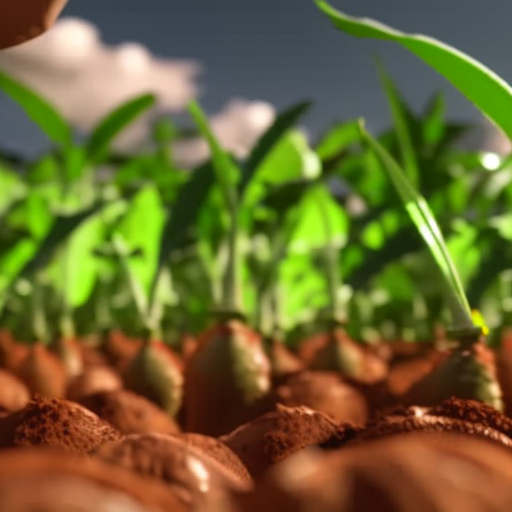
The Methodological Approach for Mainstreaming Biodiversity in Agriculture
Step 1: Priorities, Analysis, and Mapping at the Country Level
- Carried out at the national level
- Aims to produce a broad, national picture of the effects of farming systems on poverty reduction, food security, and biodiversity conservation
- Seeks to understand the conflicts and complementarities between these objectives
Step 2: Priorities, Analysis, and Research into Local Context-Sensitive Interventions
- Carried out at the local level through five case studies in Mozambique
- Covers the main socio-ecological gradients of the country
- Provides insights for developing a national strategy to mainstream biodiversity into agricultural policies
Step 3: Link between Local Initiatives and the National Framework for Mainstreaming Biodiversity in Agriculture
- Aims to integrate the results of the first and second steps
- Assists in the mainstreaming of biodiversity in agricultural policy
- Addresses conflicting relationships and complementarities between poverty reduction, food security, and biodiversity objectives

This research project adopts a transdisciplinary approach, incorporating various scientific disciplines such as socioeconomics of agriculture, ecology, agronomy, and sustainability sciences. The outcome of this work will be the development of a mapping system that identifies regions with similar biophysical and socio-economic conditions, agricultural system compositions, landscape mosaics, and levels of poverty, food insecurity, and biodiversity.
Stakeholders including decision-makers, contributors to public policies, farmers’ organizations, environmental protection organizations, and local actors are actively involved in this research. Their knowledge, perceptions, and preferences are incorporated into the analyses produced. This stakeholder engagement aims to collaboratively construct policies for mainstreaming biodiversity in agriculture.
SDGs, Targets, and Indicators
| SDGs | Targets | Indicators |
|---|---|---|
| SDG 1: No Poverty | Target 1.1: By 2030, eradicate extreme poverty for all people everywhere, currently measured as people living on less than $1.25 a day | No specific indicators mentioned in the article |
| SDG 2: Zero Hunger | Target 2.1: By 2030, end hunger and ensure access by all people, in particular the poor and people in vulnerable situations, including infants, to safe, nutritious and sufficient food all year round | No specific indicators mentioned in the article |
| SDG 15: Life on Land | Target 15.1: By 2020, ensure the conservation, restoration and sustainable use of terrestrial and inland freshwater ecosystems and their services, in particular forests, wetlands, mountains and drylands, in line with obligations under international agreements | No specific indicators mentioned in the article |
1. Which SDGs are addressed or connected to the issues highlighted in the article?
- SDG 1: No Poverty
- SDG 2: Zero Hunger
- SDG 15: Life on Land
The article discusses the effects of farming systems on poverty reduction, food security, and biodiversity conservation. These issues align with the goals of reducing poverty (SDG 1), ensuring access to sufficient food (SDG 2), and promoting the conservation and sustainable use of terrestrial ecosystems (SDG 15).
2. What specific targets under those SDGs can be identified based on the article’s content?
- Target 1.1: By 2030, eradicate extreme poverty for all people everywhere, currently measured as people living on less than $1.25 a day
- Target 2.1: By 2030, end hunger and ensure access by all people, in particular the poor and people in vulnerable situations, including infants, to safe, nutritious and sufficient food all year round
- Target 15.1: By 2020, ensure the conservation, restoration and sustainable use of terrestrial and inland freshwater ecosystems and their services, in particular forests, wetlands, mountains and drylands, in line with obligations under international agreements
The article emphasizes the need to address poverty reduction (Target 1.1), food security (Target 2.1), and biodiversity conservation (Target 15.1) within agricultural policies.
3. Are there any indicators mentioned or implied in the article that can be used to measure progress towards the identified targets?
No specific indicators are mentioned or implied in the article that can be used to measure progress towards the identified targets.
The article focuses more on the methodological approach and stakeholder involvement rather than specific indicators for measuring progress.
4. SDGs, Targets, and Indicators
| SDGs | Targets | Indicators |
|---|---|---|
| SDG 1: No Poverty | Target 1.1: By 2030, eradicate extreme poverty for all people everywhere, currently measured as people living on less than $1.25 a day | No specific indicators mentioned in the article |
| SDG 2: Zero Hunger | Target 2.1: By 2030, end hunger and ensure access by all people, in particular the poor and people in vulnerable situations, including infants, to safe, nutritious and sufficient food all year round | No specific indicators mentioned in the article |
| SDG 15: Life on Land | Target 15.1: By 2020, ensure the conservation, restoration and sustainable use of terrestrial and inland freshwater ecosystems and their services, in particular forests, wetlands, mountains and drylands, in line with obligations under international agreements | No specific indicators mentioned in the article |
Behold! This splendid article springs forth from the wellspring of knowledge, shaped by a wondrous proprietary AI technology that delved into a vast ocean of data, illuminating the path towards the Sustainable Development Goals. Remember that all rights are reserved by SDG Investors LLC, empowering us to champion progress together.
Source: afd.fr

Join us, as fellow seekers of change, on a transformative journey at https://sdgtalks.ai/welcome, where you can become a member and actively contribute to shaping a brighter future.





